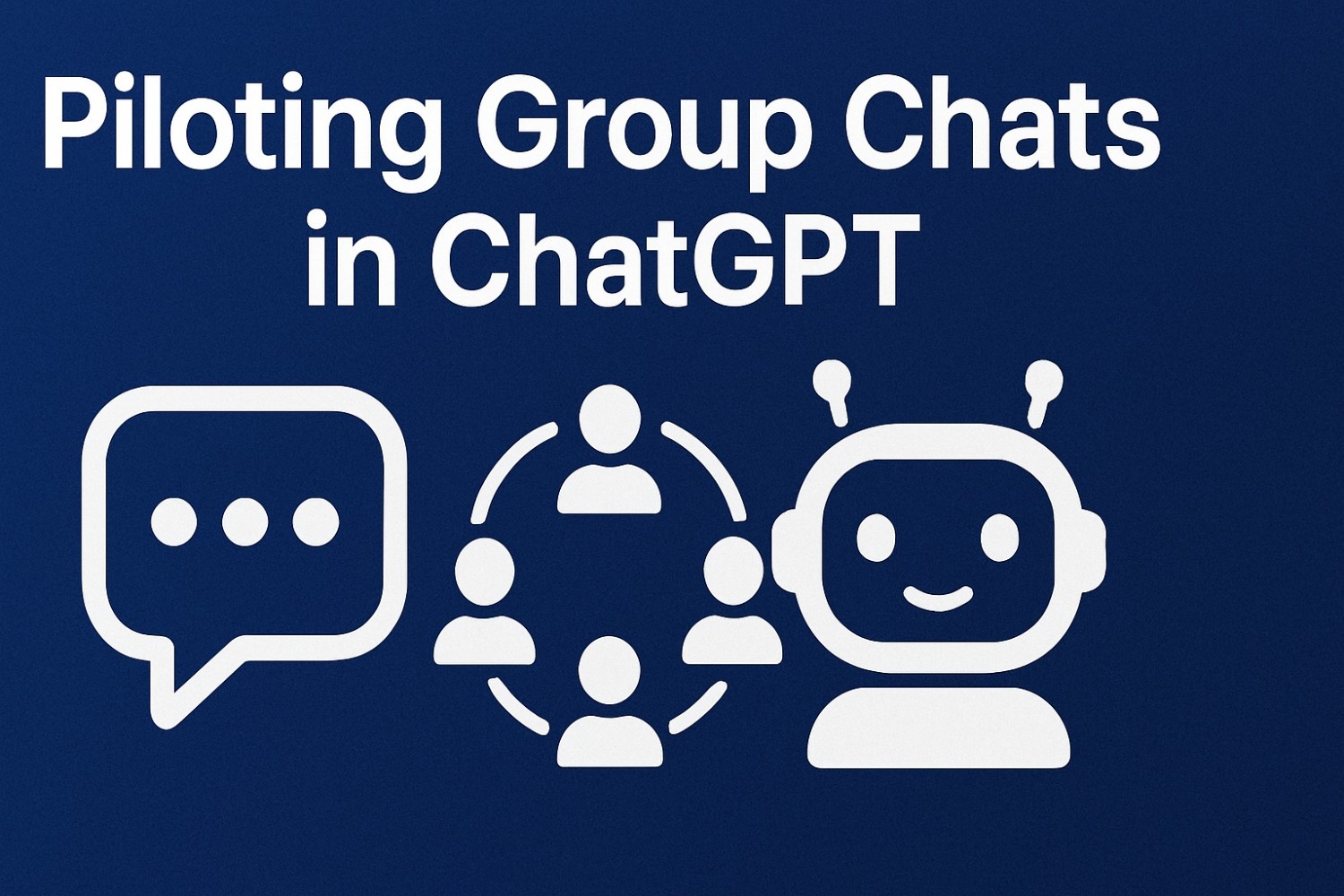Piloting Group Chats in ChatGPT

OpenAI has begun piloting group chats in ChatGPT, allowing multiple users to collaborate with an AI in the same conversation. The feature, now rolling out to selected testers, aims to bring ChatGPT into team workflows, classrooms, and community discussions. If widely deployed, this could transform how groups brainstorm, coordinate, and learn together with AI.
Background: Why Group AI Chats Matter Now
AI tools have rapidly entered workplaces, but most remain single-user experiences. As remote collaboration and distributed teams have become the norm, users have been seeking ways to integrate AI into shared discussions. Platforms like Slack and Teams already use AI plugins, but a native multi-user chat inside ChatGPT has been missing — until now.
What’s New in ChatGPT Group Chats
The pilot introduces a shared conversation space where multiple people interact simultaneously with ChatGPT. Early testers report the following capabilities:
- Real-time multi-user participation
- Shared memory within the chat session
- Role-based permissions, such as who can add files or prompt the AI
- Automatic transcripts for long collaborative threads
OpenAI says the feature is designed to make ChatGPT “a natural part of group planning, brainstorming, and problem-solving.” While the pilot remains limited, it hints at a larger shift in how generative AI integrates into team dynamics.
How It Works: A Simple Technical Breakdown
Think of the feature as a group WhatsApp thread, but with ChatGPT as one of the participants. Everyone in the group sees the same conversation in real time. The system handles:
- Synchronization — ensuring all participants get updates instantly
- Context management — keeping track of shared prompts and the evolving thread
- Turn-taking — understanding who is asking what, and responding appropriately
The underlying model doesn't change; instead, the platform now supports multi-user input routing.
Why This Matters
For users:
Teams can co-create documents, plans, or ideas with AI embedded.
Students can study together with ChatGPT acting as tutor or moderator.
Content creators can brainstorm with collaborators in the same AI-powered space.
For the industry:
It pushes AI from personal-use to collaborative-use, a natural next step in AI adoption.
It moves ChatGPT closer to becoming a full productivity and communication platform, not just a chatbot.
Challenges & Limitations
Despite its promise, the pilot has notable constraints:
Privacy concerns: Group chats require robust data isolation and transparency.
Moderation complexity: Multi-user prompts increase the risk of misuse or conflicting instructions.
Access restrictions: Currently, only select testers can try the feature, limiting broader feedback.
OpenAI will need to address these issues before a public release.
What’s Next
If testing goes well, group chats may roll out to ChatGPT Teams, Enterprise, and eventually Plus users. Future enhancements may include:
Shared whiteboards
- AI-assisted meeting summaries
- Plugin integrations inside group chats
- Persistent “rooms” for ongoing team collaboration
This update marks a key moment in the evolution of AI as a shared tool — one that enhances not just individual productivity, but collective intelligence.
Conclusion
ChatGPT group chats may reshape how people work and learn together. As OpenAI refines this pilot, the feature could become one of the most practical and widely used additions to the platform yet.